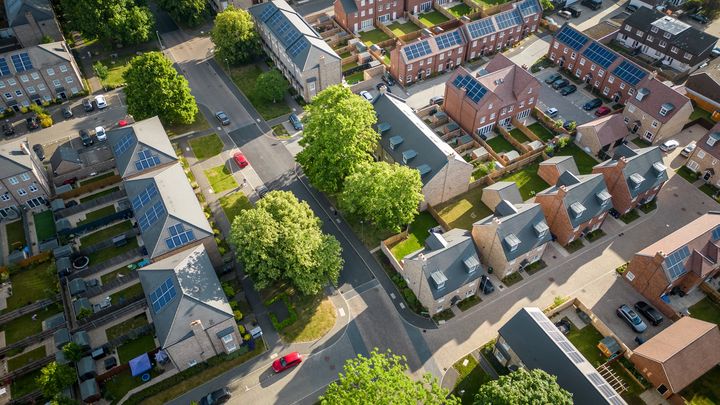
The close to 10pc rise means the pace of increases has again picked up.
Prices in Dublin rose by 10.3pc and prices outside Dublin were up by 9.1pc. The middle, or median, price of a house in the year to July was €340,000, the CSO said.
The highest house price growth in the capital was in South Dublin at 12.1pc, while Dún Laoghaire-Rathdown saw a rise of 8.3pc.
The region outside of Dublin that saw the largest rise in house prices was the Mid-West, which covers Clare, Limerick, and Tipperary, at 13.4pc.
At the other end of the scale, the South-East (Carlow, Kilkenny, Waterford, and Wexford) saw a 6.1pc rise.
In July some 4,723 dwelling purchases by households at market prices were filed with the Revenue Commissioners, an increase of 13.2pc when compared with the 4,174 purchases in July 2023.
The lowest median price paid for a dwelling was €171,000 in Longford, while the highest was €630,000 in Dún Laoghaire-Rathdown.
The most expensive Eircode area over the 12 months to July 4 was D06 Dublin 6 with a median price of €750,000, while F45 Castlerea had the least expensive price of €140,000.
Residential property prices of new homes in the second quarter of this year were 7.4pc higher than in the same three-month period last year.
Prices of second-hand homes in the second quarter of 2024 were 8.6pc higher than in the corresponding quarter of 2023.
A recent analysis by the Society of Chartered Surveyors Ireland (SCSI) found an increasing affordability gap facing many would-be buyers, including two-income couples. Many are now priced out, even if they take advantage of State schemes to support buyers.
Despite believing that prices in Ireland are now too high, most estate agents expect them to increase further.
Overall, prices of new dwellings have risen by 124.3pc from their trough in the middle of 2013.
Prices of second-hand homes are now 146.4pc higher than at their trough in 2012.
In the year to July, 49,297 home purchases were filed with Revenue. Of these, 17,455 (35.4pc) were purchased by first-time buyer owner-occupiers.
Former owner-occupiers purchased 26,037 (52.8pc). The balance of 5,805 (11.8pc) were acquired by non-occupiers. This includes local authorities, housing charities and investment funds.
Meanwhile, the Central Bank has said housing completions will fall short of the 40,000 units that Taoiseach Simon Harris has repeatedly said will be finished this year. But the need for homes is even greater than previously thought, according to their projections.
Economists at the bank have revised downwards their forecasts for housing completions in September’s Quarterly Bulletin, a regular update on the state of the economy. The latest bulletin says completions will be 32,000, 36,500 and 39,000 in 2024, 2025 and 2026, respectively.
That would mean the number of new homes finished and available to move into this year will be roughly the same as in 2023, when the total was 32,695.
While that number is close to the target of 33,450 set out in the Housing For All plan, it is well short of the 40,000 homes Mr Harris has said will be completed in 2024.
The tally is also well below what the Central Bank’s economists assess is the real need for housing. Its latest research suggests that in a worst-case scenario as many as 68,000 homes would have to be completed every year for a decade to meet the combination of new demand and so-called pent-up demand from a near decade of under building.



